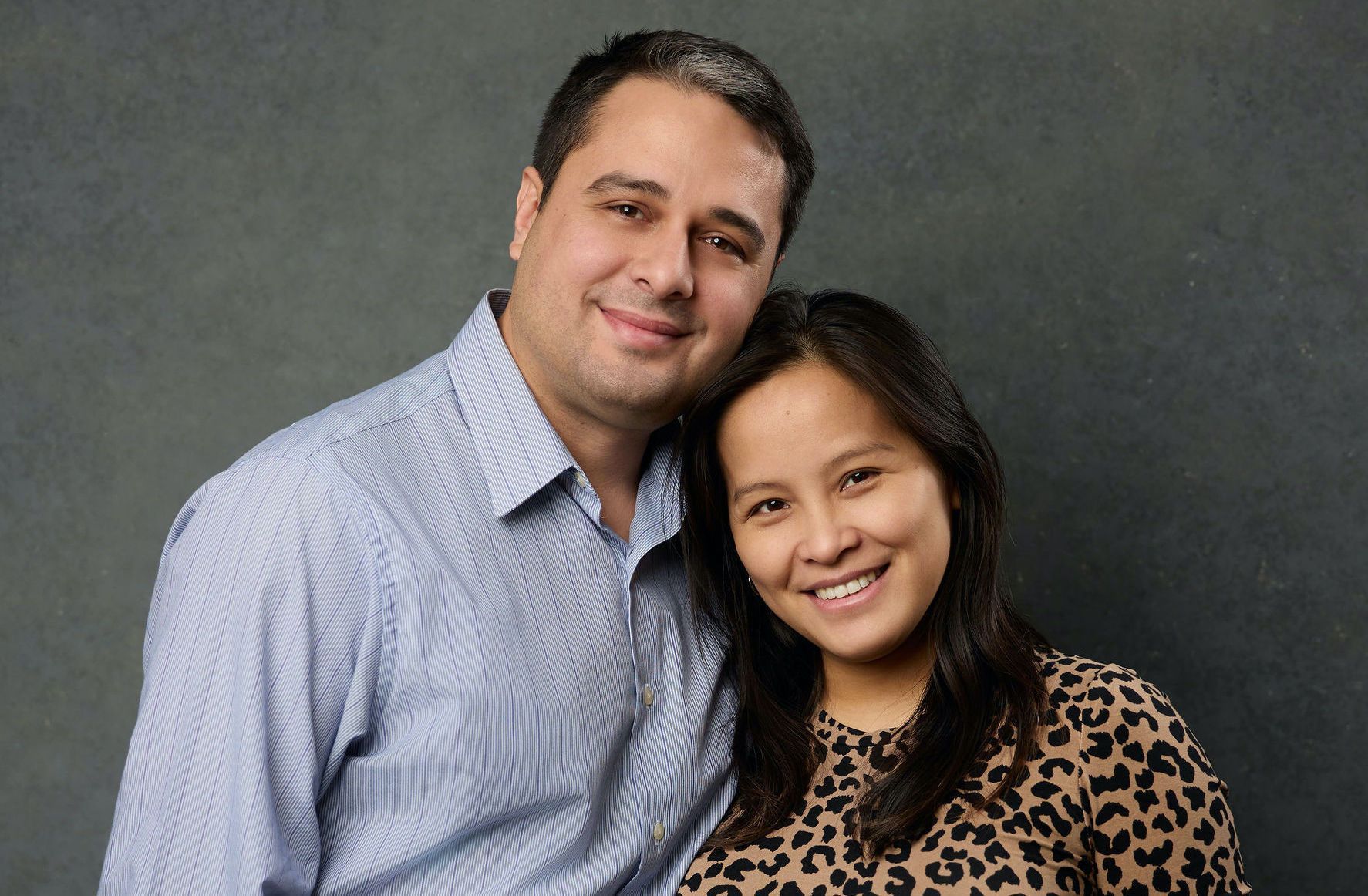US Citizen’s Guide to US Immigration of a Canadian Spouse or Fiance

This post will discuss two types of Immigrant Visas available for a Canadian Spouse or Fiance:
- CR-1/IR-1 Spousal (Immigrant) Visa
- K-1 Fiance (Immigrant) Visa
Additionally, the Adjustment of Status filing option will be discussed.
What US Consulate in Canada can you receive an Immigrant Visa?
Montreal!!! The only US Consulate that processes Immigrant Visas in Canada is the US Consulate in Montreal. The following Consulates and Embassy DO NOT process Immigrant Visas:
- Ottawa
- Calgary
- Halifax
- Quebec
- Toronto
- Vancouver
- Winnipeg
An Immigrant Visa CANNOT be transferred to any other US Embassy/Consulate in Canada. It must be processed at the Montreal US Consulate’s Immigrant Visa Division.
What is the difference between getting an Immigrant Visa and Adjusting Status?
An Immigrant Visa processes at the US Consulate in Montreal under the DOS, whereas Adjustment of Status processes at a USCIS Field Office within the United States.
Most Canadians are allowed to enter the US on their “automatic” Visa Waiver/Tourist Visa. However, a tourist can be punished for “visa fraud” if they stop acting like a tourist and try to immigrate from a non-immigrant status (tourism). There are some special exceptions, such as:
- A relationship started immediately after entering the US and marriage occurred within the 180-day stay
- A long-distance relationship resulted in pregnancy during the latest trip to the US, and now the US Citizen proposed marriage
- A medical issue has hospitalized the Canadian, forcing them to remain in the US
- A marriage occurred during the latest trip, and the US Citizen is an Active Duty Service Member about to deploy and wanted the Canadian to remain in the US while deployed. (Canadian Spouse is usually pregnant).
If a special exception does not apply to a Canadian, then an Immigrant Visa should be pursued.
Visa Process:
What is the CR-1/IR-1 Spousal (Immigrant) Visa Process?
The IR-1 / CR-1 Spousal Immigrant Visa is the visa that would allow a Canadian spouse to receive a Green Card Visa and immigrate to the US. The process has 2 general steps:
- I-130: Petition to Immigrate a Spouse to the US
- DS-260: Immigrant Visa Application
However, a more in-depth overview of the process in its entirety provides a better understanding:
- Part 1 – Petition to Recognize the Relationship – Submit the I-130 Electronically ( Related Blog Post found here )
- Part 2 – Waiting Period – I-130 Pending awaiting a USCIS Officer to review the filing and supporting documents ( Processing times Post found here )
- Part 3 – NVC Processing – Visa fees are paid online, DS-260 completed, and supporting documents uploaded.
- Part 4 – Consulate Interview – NVC provides the Montreal Interview day and time, the Embassy/Consulate Account would be Registered, the Immigrant Medical Performed, Documents Organized, and Interview Attended.
- Part 5 – Arrive in the US – Pay Immigrant Fee, Fly to the United States, Apply/Receive US Social Security Card, and Receive Green Card in the mail within 3-4 months after entry.
What is the K-1 Fiance (Immigrant) Visa Process?
The Fiancee Visa has 3 steps:
- Step 1: I-129F Petition filed with USCIS
- Step 2: DS-160 K-1 Fiancee Visa application filed with the US Embassy in Montreal, which allows the fiancee to enter the US
- Step 3: I-485 Adjustment of Status filing with USCIS to receive a Green Card
Although the K-1 Fiance is frequently confused as a non-immigrant visa, it is 100% handled and treated as an immigrant visa. The K-1 Fiance Visa CANNOT be treated like a tourist visa. It cannot be scheduled at any time. The ABOVE steps must be followed.
More information can be found here: https://www.fickeymartinezlaw.com/immigration/k-1-fiance-visa/is-the-k1-fiance-visa-an-immigrant-or-non-immigrant-visa/
A more thorough review of the Fiance Process is as follows:
- Part 1 – File a petition ( I-129F ) with USCIS.
- Part 2 – Waiting Period – I-129F Pending awaiting a USCIS Officer to review the filing and supporting documents ( Processing times Post found here )
- Part 3 – I-129F Approval. Once the petition has been received from USCIS at the National Visa Center, you will be notified electronically. Once the National Visa Center sends the case to U.S. Consulate General Montreal, the Visa Unit will send you scheduling and appointment preparation instructions via email (Packet 3).
- Part 4 – Complete the DS-160 Visa Application
- Part 5 – Complete the I-134 affidavit of Support
- Part 6 – Complete Montreal K-1 Packet 3 Processing upon Consulate Instruction, found here: https://ca.usembassy.gov/wp-content/uploads/sites/27/2016/07/Packet3Instructions-K1.pdf
- Part 7 – Register a Consulate Account, link found here: https://ais.usvisa-info.com/en-ca/iv/information/iv_services
- Part 8 – Prepare for and schedule the Medical Examination .
- Part 9 – Schedule an appointment, more info found here: https://ca.usembassy.gov/wp-content/uploads/sites/27/2016/03/Packet4-MTL.pdf.
- Part 10 – Prepare for and attend the interview.
- Part 11 – Understand the Visa Approval / Refusal process.
- Part 12 – Receive your K-1 Fiance Visa.
- Part 13 – Enter the US, receive an I-94 Lawful Entry Record, and Marry within 90 days of Entry
- Part 14 – Apply for a Social Security Card between day 14 and 75 of Entry into the US. More info found here: /immigration/k-1-fiance-visa/how-can-a-k1-visa-holder-get-a-us-social-security-card/
- Part 15 – Begin the Adjustment of Status
- Part 13 – Receive the Employment Authorization Card
Things to Know:
Special Attention: Canadian Birth Certificate and Police Certificate
There are two documents that frequently cause some confusion when a Canadian is attempting to acquire a US Immigrant visa, and they are a (1) Long Form Birth Certificate and (2) an RCMP Police Certificate.
Our office has detailed information on both documents here:
Canadian Long-Form Birth Certificate for US Immigration
Canada Police Certificate: US Visa Document Requirement
K-1 Letters of Intent: Things to Know
The Canadian Letter of Intent MUST be a promise to marry within Thirty (30) days versus the general ninety (90) days. A template can be found here:
Fiance Letter of Intent Template
Are there any Consular / Immigrant Visa Interview instructions?
The Montreal Embassy provides the following instructions for consular interviews: https://travel.state.gov/content/travel/en/us-visas/Supplements/Supplements_by_Post/MTL-Montreal.html
How do I prove my Relationship to USCIS for purposes of the Petition?
Our office has created two really good guides for both the I-130 Petition and I-129F Petition:
Joint Bona Fide Documents: How to Start meeting the USCIS I-130 Evidence Requirement for a Marriage
I-129F Fiance Visa: How to prove your relationship to USCIS
What if a filing is already submitted, and taking too long, how can the average processing time be checked?
If doing Consular Processing, the Fiance Visa and Spousal Visa start with a USCIS Petition:
- I-129F for K1 Visa (Service Center located on USCIS Receipt Notice, but usually California Service Center)
- I-130 for CR-1/IR-1 Visa (Service Center located on USCIS Receipt Notice, but usually Potomac Service Center)
The below blog post helps locate the USCIS Tool to see up-to-date processing times. If a filing is taking too long, it is best to see if it is processing at the same pace as others.
How do I check USCIS processing times?
AFTER THE PETITION, the Visa processing depends 100% on NVC Processing Times (found here: https://travel.state.gov/content/travel/en/us-visas/immigrate/nvc-timeframes.html ). Additionally, every Embassy and Consulate process at different speeds, which the speed fluctuates throughout the year, AND there is NO processing time tools or sources.
What is the US Fiance/Spouse’s Financial Requirement and Stability Minimum?
In order to Sponsor a Canadian Fiance or Spouse, the US Citizen is required to either:
- Have Employment that exceeds the I-864P for the household size
- Have Self-employment where the Profit exceeds the Expenses, and that Adjusted Gross Income exceeds the I-864P for the household size
- In unemployed or have insufficient employment, have assets that exceed the I-864P by three times.
For Example:
- A Spouse or Fiance that makes $25,000 annually from a W-2 Employment for a household size of 2 usually exceeds the I-864P.
- A Self-employed US Citizen can have $100,000 in income, but if the expenses are $90,000, the profit of $10,000 would not exceed the I-864P.
- A US Citizen is unemployed, but has a $100,000+ House paid off or a stock portfolio of $100,000+, the asset can normally exceed the I-864P requirement.
The I-864P Guidelines can be found here: https://www.uscis.gov/i-864p
What Financial Documents MUST a US Citizen provide:
The Following Documents are usually required:
- W-2 Employment
- Most Recent W-2
- 1040 Tax Return Forms for the past 3 years
- IRS Tax Return Transcripts for the past 3 years, more info found here: /immigration/how-to-request-your-irs-transcript-helpful-guide-to-acquire-this-commonly-requested-immigration-supporting-document/
- 12 months of paystubs
- 1099 Employment
- Most Recent 1099
- 1040 Tax Return Forms for the past 3 years
- IRS Tax Return Transcripts for the past 3 years, more info found here: /immigration/how-to-request-your-irs-transcript-helpful-guide-to-acquire-this-commonly-requested-immigration-supporting-document/
- 12 months of paystubs
- Employment Contract (if any)
- Self-employment / Business Owner
- Proof of ownership
- Proof of Incorporation or Formation
- Business bank Statements for the past 12 months
- Summary of Current Profits and Losses
- Most Recent Business Schedules (e.g. Schedule C)
- 1040 Tax Return Forms for the past 3 years
- IRS Tax Return Transcripts for the past 3 years, more info found here: /immigration/how-to-request-your-irs-transcript-helpful-guide-to-acquire-this-commonly-requested-immigration-supporting-document/
- Quarterly Tax Filings, if the business files with the IRS Quarterly
- VA Disability Income
- VA Benefit and Disability Information Letter , located on the VA Ebenefits Website ( Link found here )
- Past 12 months of Bank Statements from the Account that receives the Direct Deposits
- Asset Income (More Information found here: /immigration/adjustment-of-status/i-864-asset-calculations/ )
- Stock Portfolio, IRA, 401K, or CD: Most Recent Statement
- Rental Property Income:
- Past 12 months of rent payments
- Past 12 months of mortgage statements
- Property Equity
- Registered Deed
- Tax Assessment or Appraisal
- Most Recent Mortgage Statement
- Second or More Vehicle
- Registration
- Photo of vehicle
- Kelly Blue Book Assessment
- Most Recent Vehicle Loan Statement, if any
Common Additional Questions:
When the Immigrant Visa is in Hand, can the Canadian Drive or Fly to the United States?
Driving and Flying are both available once the Immigrant visa is in hand.
Can a Canadian Fiance or Spouse Drive in the United States with their Canadian Driver’s License?
Technically, an Immigrant Visa Holder CANNOT use a foreign drivers license to drive in the United States. As a permanent resident or soon to be permanent resident, the Canadian Fiance or Spouse will be held to the same standards as US citizens.
The Local DMV usually requires:
- Passing the driving test
- Acquire the proper car insurance
- Drive with a US driver’s license
Can a Fiance or an Immigrated Spouse receive a Social Security Card?
Our office has created two really good guides for both the Fiances and Spouses.:
- Fiance Visa: /immigration/k-1-fiance-visa/how-can-a-k1-visa-holder-get-a-us-social-security-card/
- Spousal Visa: /immigration/how-to-apply-for-a-social-security-card-at-the-local-ssa-office-and-what-documents-are-needed-for-immigrants/
Disclaimer: This Blog is made available by the lawyer or law firm publisher for educational purposes only as well as to give you general information and a general understanding of the law, not to provide specific legal advice. By using this blog site you understand that there is no attorney-client relationship between you and the Blog/Web Site publisher. The Blog should not be used as a substitute for competent legal advice from a licensed professional attorney in your state.
The post US Citizen’s Guide to US Immigration of a Canadian Spouse or Fiance appeared first on Fickey Martinez Law Firm.












